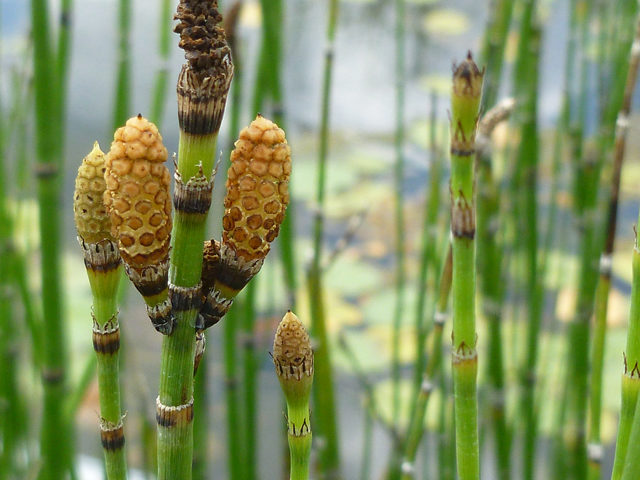
Photographer: Page, Lee; Location Notes: Lady Bird Johnson Wildflower Center Display Gardens.
Rough Horsetail or Scouring Rush (Equisetum hyemale) is a perennial, herbaceous plant that is native to the temperate regions of Eurasia and North America. The class Equisetopsida has its roots as far back as the Devonian Period, approximately 416 to 359 million years ago. Fossil evidence places the genus Equisetum at 150 million years ago, making it one of the oldest living genera of vascular plants. Equisetum hyemale would have occurred alongside McClung Museum’s Edmontosaurus dinosaur around 84-66 million years ago (seen below among the Rough Horsetail plants).

Use of rough horsetail by past people includes its importance as a medicinal and edible plant. Past Native American groups boiled the stalks of rough horsetail to create a diuretic to treat a variety of diseases. In culinary uses, the stalks of rough horsetail can be cooked much like asparagus or fried; the rootstocks can also be eaten. Additionally, the stems, high in silica content, were used by American Indians and early Euroamerican settlers for scouring and polishing pots and pans and could be used for sanding wooden objects, like arrow shafts or floor planks. However, large quantities of rough horsetail ingested by humans or grazing animals can be toxic. In small quantities this plant will not harm people, and the toxicity can be destroyed by heat or thorough drying.
For more information:
Moerman, Daniel
1998 Native American Ethnobotany. Timber Press, Portland, Oregon. Online database at http://naeb.brit.org/
The Editors of Encyclopedia Britannica
2014 Horsetail. Encyclopædia Britannica, Inc. Online article at https://www.britannica.com/plant/horsetail.